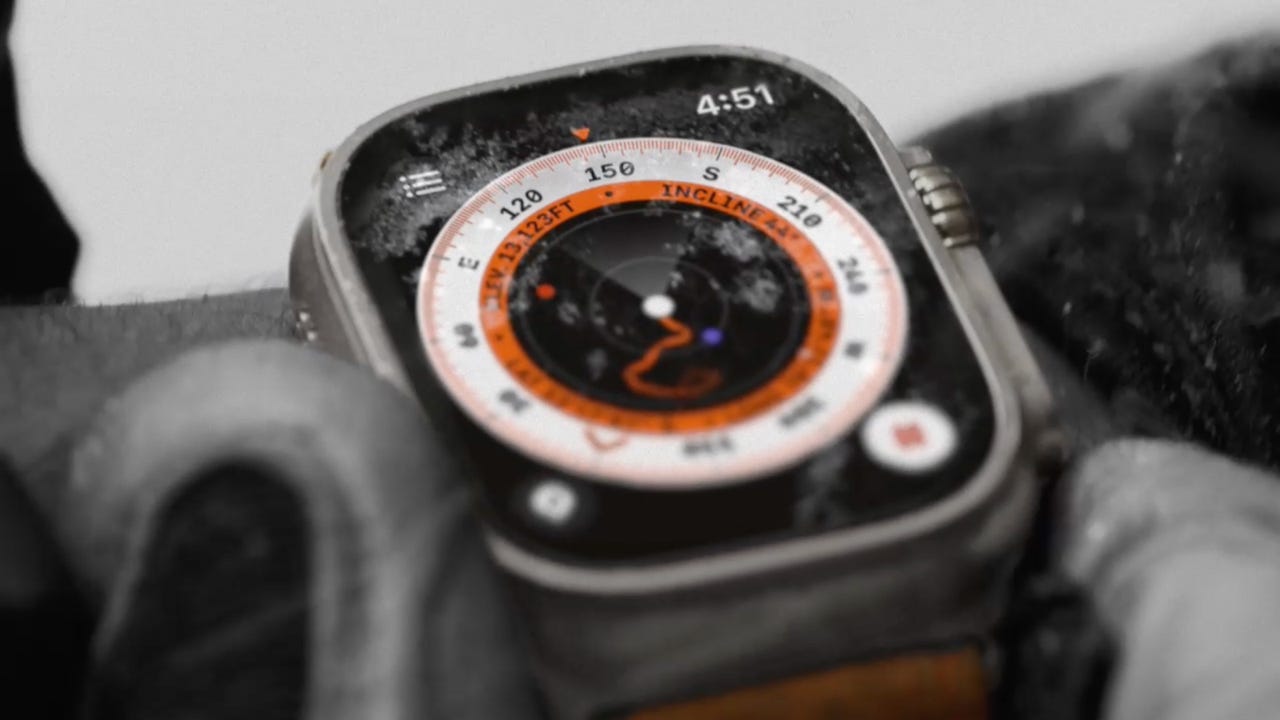
































Apple Watch Ultra makes use of precision dual?frequency GPS
AppleGPS receivers used to be standalone devices,but now they are built into the most basic of smartphones and smartwatches.
Wouldn't it provide some peace of mind if you could check your child's location at any given time?
Read nowGPS is everywhere. And it's a bit boring.
Apple is now packing "precision dual?frequency GPS" into theiPhone 14 Pro/Pro Max line,as well as theApple Watch Ultra . (If you're an Android user that owns aXiaomi , OnePlus , orHuawei , you might already have had this feature for a while now.)
But isn't GPS already precise enough? After all, I took a walk today with my iPhone and Apple Watch, neither of which use the precision dual?frequency GPS feature, and they had no trouble knowing where I was the whole time.
So what's the deal?
GPS stands for Global Positioning System, and is the name given to the satellite-based navigation system owned and operated by the US government. Primarily designed for military use, the system also found uses in civilian navigation.
The system currently consists of a "constellation" of 31 operational satellites.
Since the launch of the US system, China, Russia, the EU, India, and Japan have built their own GPS systems, and these are called BeiDou (consisting of 35 operational satellites), GLONASS (22 satellites), Galileo (24 satellites), NavIC (7 satellites), and QZSS (5 satellites), respectively.
Apple's iPhone and Apple Watch can use the US GPS, GLONASS, Galileo, QZSS, and BeiDou systems.
GPS satellites send signals at different frequencies, called bands. There are several bands that GPS satellites can transmit on, depending on the system.
We're going to look at two bands, the L1 and L5, since these were the two mentioned by Apple in the iPhone 14 Pro and Apple Watch Ultra event.
L1 is the oldest of the GPS signals, and is actually made up of two different signals:
Now, L1 is reliable and highly accurate. It's fitted to countless devices, and we've been using it for years.
But it has a limitation.
The signal doesn't pass through obstacles all that well.
Buildings, big trees, and even dense foliage can weaken or block the signal. GPS signals can also be reflected off buildings or walls, resulting in what's known as multipath error.
This is where L5 comes in.
This is a newer signal designed to eliminate many of the weaknesses associated with the L1 signal and adding the ability for greater signal processing to remove erroneous data.
Well, if using L1 on its own can give you pretty accurate location data, then surely using L1 and L5 gives you even better accuracy?
It does!
And this is what Apple is bringing to its high-end, higher-priced iPhone 14 Pro/Pro Max and the Apple Watch Ultra. It'll make the GPS location data more accurate at times when the L1 signal alone might be inaccurate.
But it's important to recognize that Apple isn't the first here to use this technology in smartphones -- the first handset to make use of this was the Xiaomi Mi 8, and it had this feature back in 2018, and is now found in a number of smartphones such as theXiaomi Mi 11 , Huawei Mate 40 Pro 5G , and theOnePlus 10T 5G .
And these smartphones will set you back a lot less than the Apple Watch Ultra, never mind the iPhone 14 Pro.
Put simply, it's not ready.
According to the US government, the L5 signal is currently only being broadcast by 17 GPS satellites and is labeled as "pre-operational."
However, by combining the operational L1 signal with the pre-operational L5 signal, Apple can get the benefits of L5 while having the backup of the L1 system.
The answer is the usual it depends.
For most people, regular old L1 GPS is enough. It's more than accurate enough in most conditions.
However, if you feel you need greater and more constant accuracy, or you live somewhere where you're sometimes frustrated by the GPS coverage, then this might be the upgrade you're looking for.
Notice how I said might.
GPS is a signal that comes from satellites that orbit 10,000 miles above your head, and as such there are a lot of variables that can come into play, from the environmental ones I mentioned above, to things like atmospheric conditions.
However, under most conditions, dual?frequency GPS using the L1 and L5 band will offer greater accuracy and reliability.
Also:iPhone 14 Pro vs. iPhone 13 Pro: Is it worth the upgrade?
 Tags chauds:
technologie
Notre processus
Téléphones intelligents
IPhone iPhone
Tags chauds:
technologie
Notre processus
Téléphones intelligents
IPhone iPhone